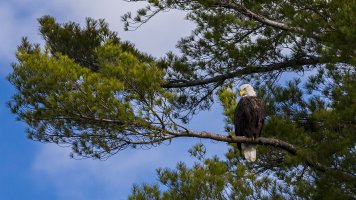Was sitting on the back porch today and a decent sized raptor of some sort swooped by. Brown and tan for the most part, a healthy 4'+ wingspan, relatively small head and beak. I got a few lazy gliding circles not twenty feet from me and off it went.
I checked my local source:
https://www.wildlife.ca.gov/conservation/birds/raptors
It had the mottled breast/belly of the peregrine shown on this page in the top right, but the head looked different. It looked most like an adult Merlin of the birds I cross-referenced from above at my alma mater's ornithology website, but it was considerably bigger than the Merlin dimensions of a 2' wingspan listed there.
Any ideas of what it is?
I don't bird or plan to get into birding, but I wouldn't mind capturing this one or others that might swoop by. We're on the top of a hill and it's not uncommon to see this, so I thought I'd leave my 5D3 + 70-200 f/2.8L IS II ready to go with a custom mode just for this if I spot one again.
My plan:
Any changes you'd recommend? I have a 2x T/C but I honestly didn't need it given how close it came this time.
- A
I checked my local source:
https://www.wildlife.ca.gov/conservation/birds/raptors
It had the mottled breast/belly of the peregrine shown on this page in the top right, but the head looked different. It looked most like an adult Merlin of the birds I cross-referenced from above at my alma mater's ornithology website, but it was considerably bigger than the Merlin dimensions of a 2' wingspan listed there.
Any ideas of what it is?
I don't bird or plan to get into birding, but I wouldn't mind capturing this one or others that might swoop by. We're on the top of a hill and it's not uncommon to see this, so I thought I'd leave my 5D3 + 70-200 f/2.8L IS II ready to go with a custom mode just for this if I spot one again.
My plan:
- AI Servo + Center AF '+' cluster
- 6 fps
- I generally shoot Av, f/3.5 or so (plenty of light, no need to shoot wide open)
- Will set ISO to get at least 1/2000s (when I saw this one ISO 400, was fine for this).
- Usually blue skies here, so a CPL is probably going to be used.
Any changes you'd recommend? I have a 2x T/C but I honestly didn't need it given how close it came this time.
- A

